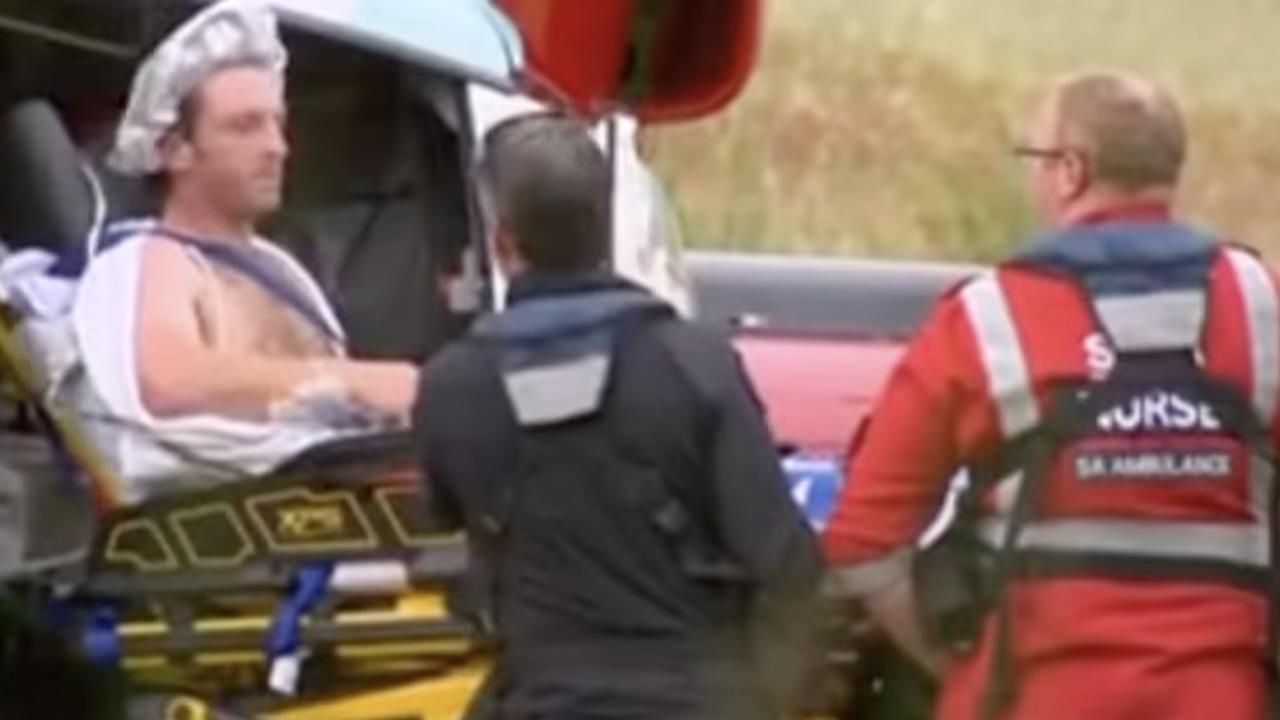Disturbing discovery at bottom of huge ocean hole
Divers finally made it to the bottom of Belize’s Great Blue Hole, but a dirty secret was lurking in the deep.
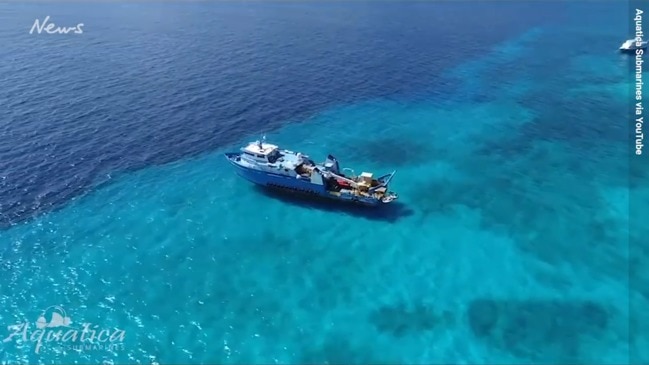
Divers have finally made it to the bottom of Belize’s iconic Great Blue Hole, but a dirty secret was lurking at the bottom of the pristine natural wonder.
The Great Blue Hole is a giant marine sinkhole in the Caribbean off the coast of Belize that has left tourists and scientists awe-struck. Stretching 318 metres across and 124 metres deep, it is one of the country’s top attractions.
The beautiful, almost perfectly circular hole has perplexed researchers since it was discovered, but remained largely unexplored due to a lack of equipment.
An expedition to explore the Great Blue Hole, funded by billionaire Richard Branson, was completed in 2018 — but it went viral this week as “proof that humans are terrible”.
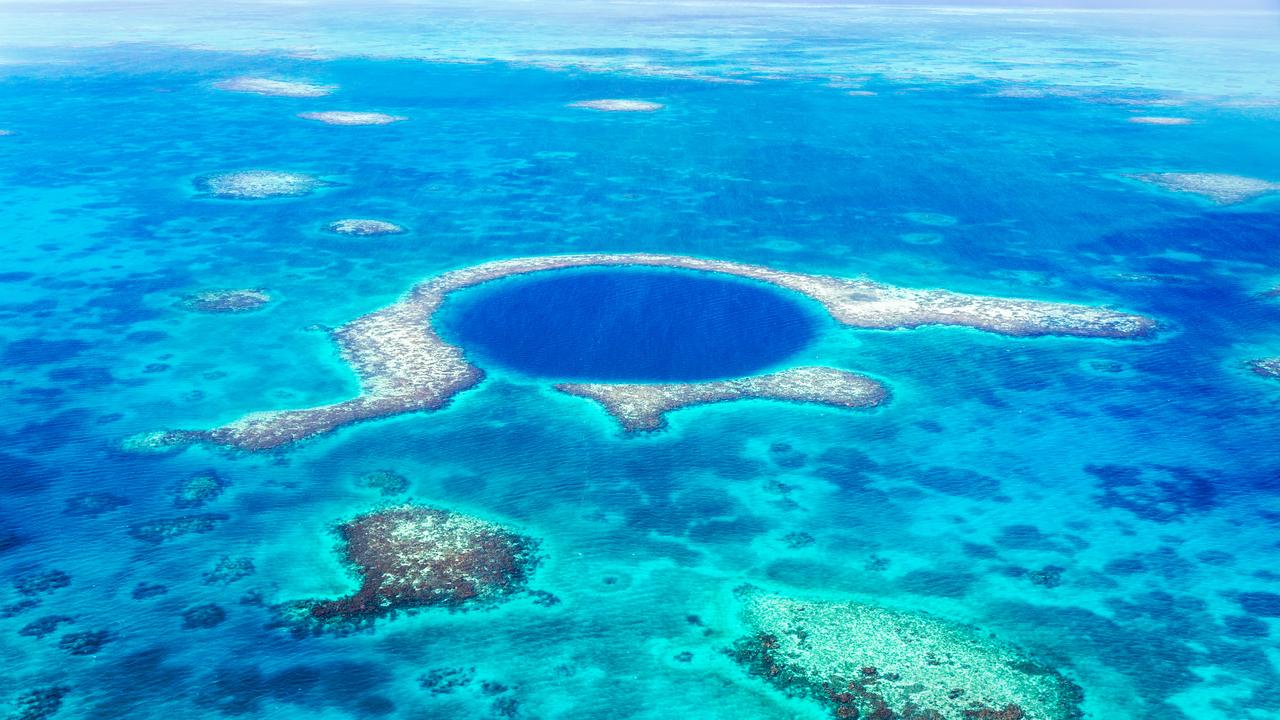
In 2018, a crew from Aquatica Submarines began their descent to the bottom of the Blue Hole. Their mission was to create a 3D map of the sinkhole’s interior, but they were confronted by a disturbing sight at the bottom.
As the crew, including Branson, descended, they marvelled at the usual suspects: sea turtles, reef sharks and giant corals. But as they reached the 90-metre mark, life started to vanish.
Erika Bergman, who was on the expedition, explained a thick layer of toxic hydrogen sulfide stretched across the sinkhole, preventing oxygen from getting deeper.
“We found conchs and conch shells and hermit crabs that had fallen into the hole and suffocated,” she said in an interview at the time.
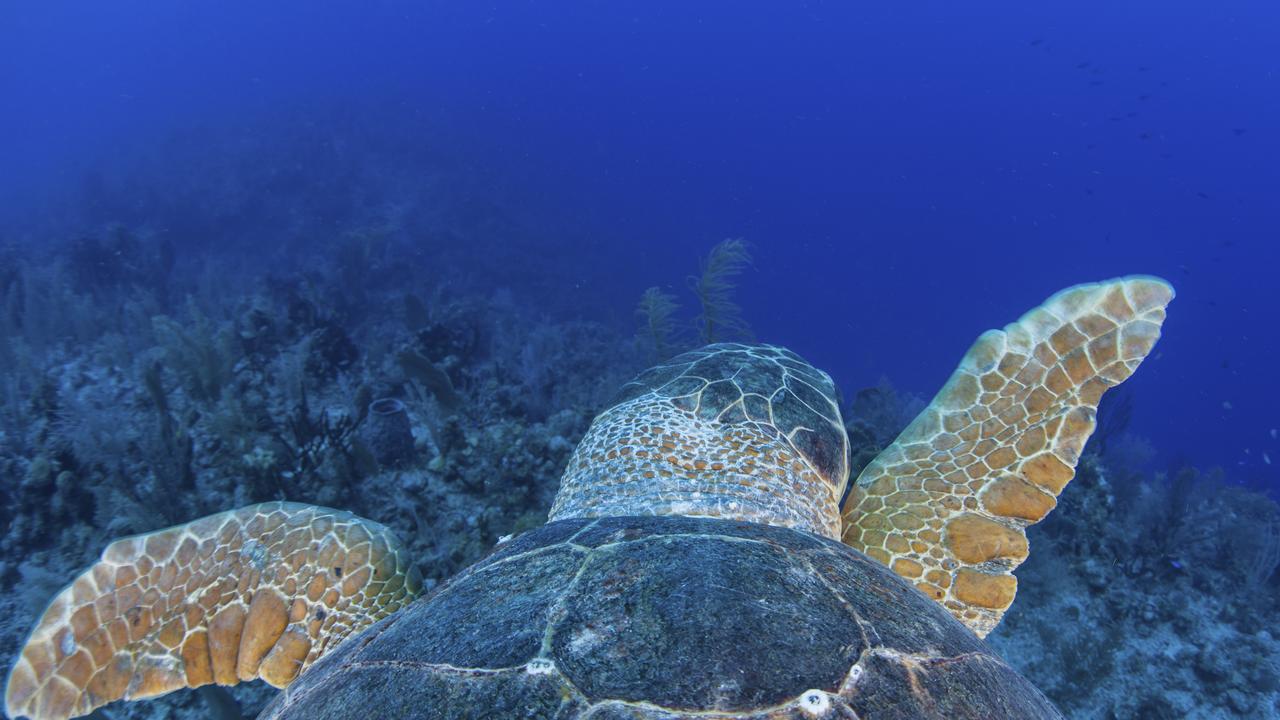
But at the bottom of the Great Blue Hole was the most shocking discovery of all — human rubbish.
Branson’s team found a two-litre Coke bottle that had made its way 124 metres deep, as well as a lost GoPro camera full of someone’s holiday photos.
Alongside the trash were two human bodies, believed to belong to two of the three divers who were lost in the Great Blue Hole during a previous expedition.
“We found the resting place of a couple folks, and we very respectfully let the Belize government know where we found them. Everyone decided that we would just not attempt any recovery. It’s very dark and peaceful down there, just kind of let them stay,” Bergman said.
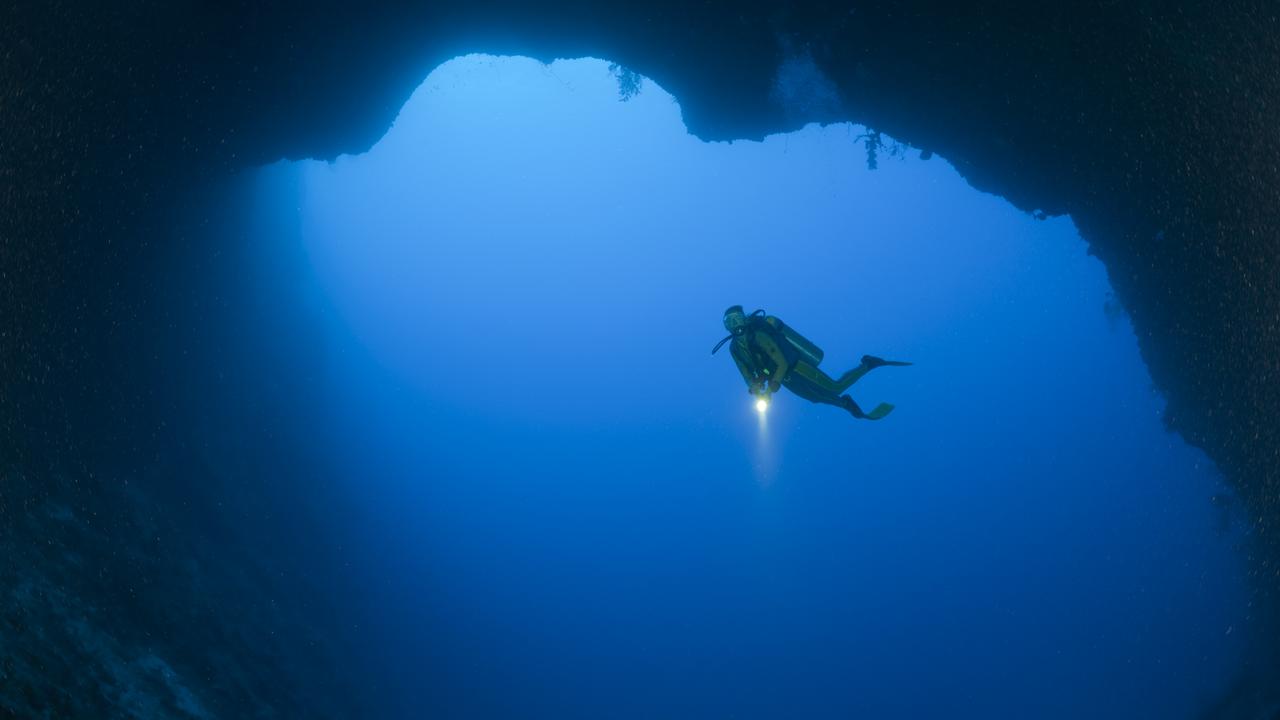
Not all of the team’s discoveries were quite so grim. They also found stalactites — a kind of icicle-shaped formation that usually hangs from the roof of a cave — which proved the Great Blue Hole was once a dry cave home to prehistoric life.
Scientists believe the cave formed during the last Ice Age, which ended about 14,000 years ago. The cave flooded and collapsed as the Ice Age ended and sea levels began to rise, leaving behind the Blue Hole we see today.
Researchers also predict it won’t be around forever. Waterfalls of sand tumble into the hole every day, slowly filling it up.
![Richard Branson called it “one of the starkest reminders of the danger of climate change [he had] ever seen.” Picture: Getty Images.](https://content.api.news/v3/images/bin/f4e03524e613783ad9cf8e9139d6f847)
Reacting to the news online, many expressed shock at the troubling discoveries.
“Anyone want to explore the Blue Hole with me? Oh wait, humans have already ruined it,” one person wrote.
“Even a place where humans had never visited wasn’t safe from our trash. People are terrible,” added another.
Branson described the expedition as “one of the starkest reminders of the danger of climate change [he had] ever seen.”
“The Blue Hole is made of a complex system of caves that once formed on dry land. It is proof of how oceans can rise quickly and catastrophically, he wrote at the time.
“The real monsters facing the ocean are climate change — and plastic. Sadly, we saw plastic bottles at the bottom of the hole, which is a real scourge of the ocean. We’ve all got to get rid of single-use plastic.”





